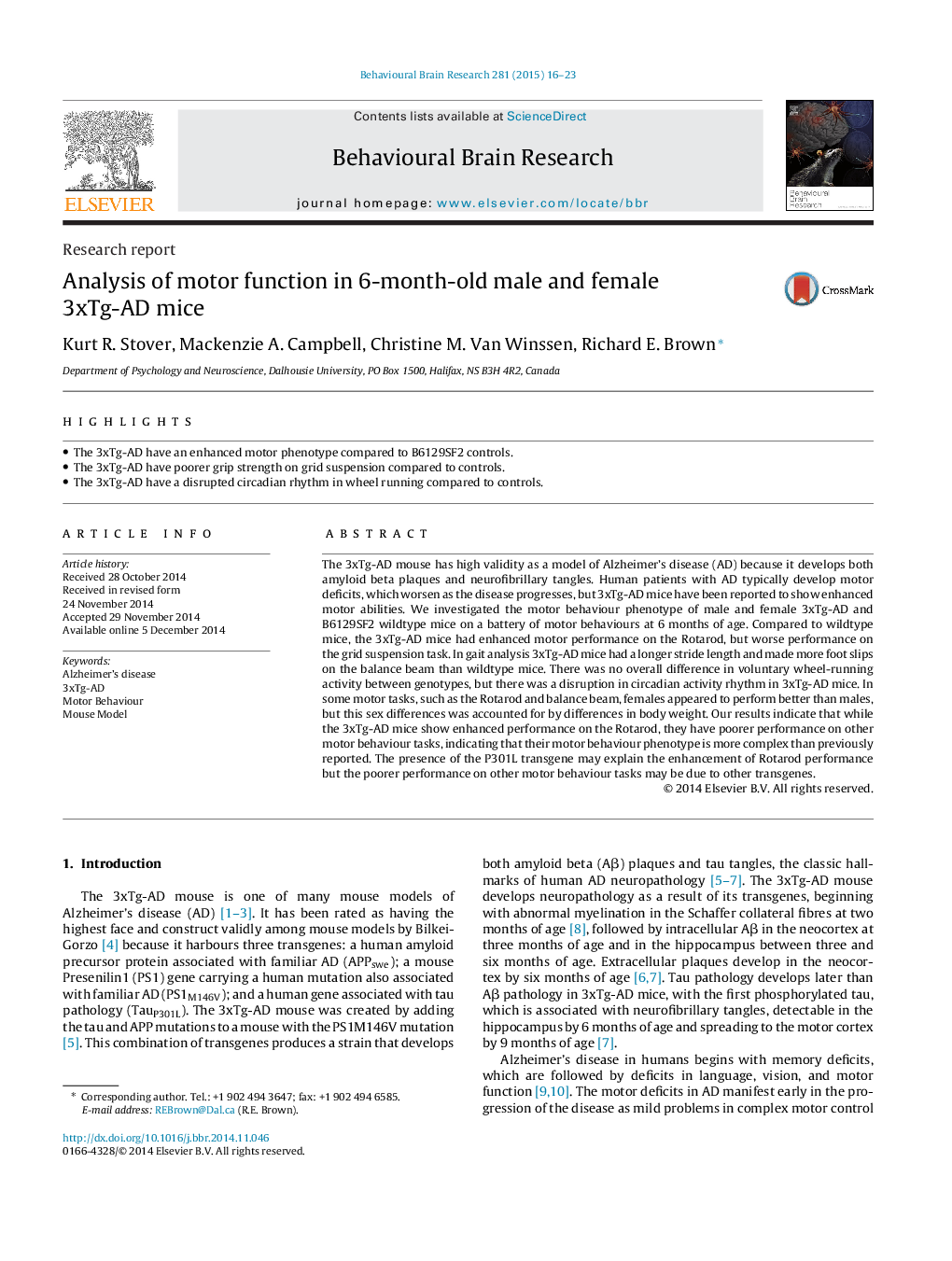| Article ID | Journal | Published Year | Pages | File Type |
|---|---|---|---|---|
| 6256952 | Behavioural Brain Research | 2015 | 8 Pages |
•The 3xTg-AD have an enhanced motor phenotype compared to B6129SF2 controls.•The 3xTg-AD have poorer grip strength on grid suspension compared to controls.•The 3xTg-AD have a disrupted circadian rhythm in wheel running compared to controls.
The 3xTg-AD mouse has high validity as a model of Alzheimer's disease (AD) because it develops both amyloid beta plaques and neurofibrillary tangles. Human patients with AD typically develop motor deficits, which worsen as the disease progresses, but 3xTg-AD mice have been reported to show enhanced motor abilities. We investigated the motor behaviour phenotype of male and female 3xTg-AD and B6129SF2 wildtype mice on a battery of motor behaviours at 6 months of age. Compared to wildtype mice, the 3xTg-AD mice had enhanced motor performance on the Rotarod, but worse performance on the grid suspension task. In gait analysis 3xTg-AD mice had a longer stride length and made more foot slips on the balance beam than wildtype mice. There was no overall difference in voluntary wheel-running activity between genotypes, but there was a disruption in circadian activity rhythm in 3xTg-AD mice. In some motor tasks, such as the Rotarod and balance beam, females appeared to perform better than males, but this sex differences was accounted for by differences in body weight. Our results indicate that while the 3xTg-AD mice show enhanced performance on the Rotarod, they have poorer performance on other motor behaviour tasks, indicating that their motor behaviour phenotype is more complex than previously reported. The presence of the P301L transgene may explain the enhancement of Rotarod performance but the poorer performance on other motor behaviour tasks may be due to other transgenes.
